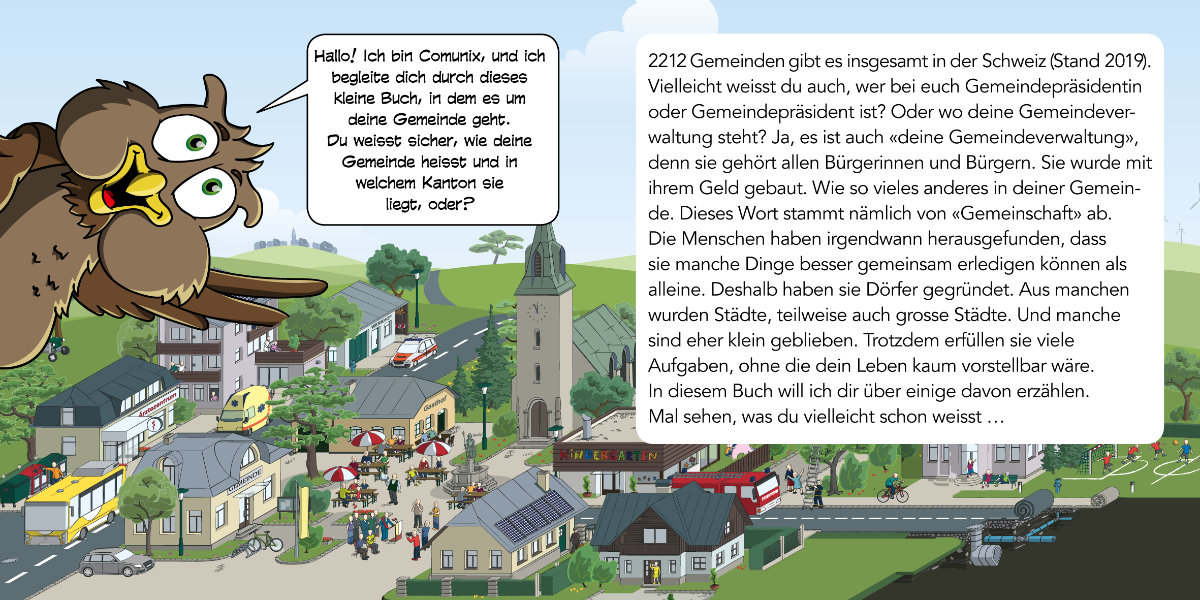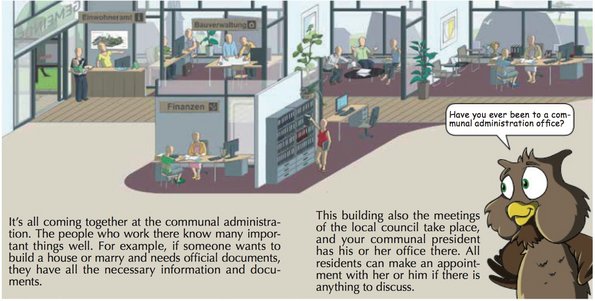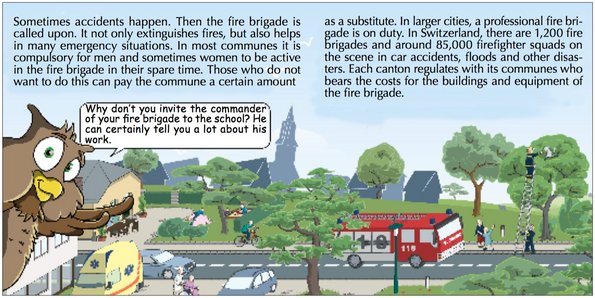“My commune, my home”
In the last issue of Current Concerns an interesting article was published by former Federal Councillor Kaspar Villiger on the value of militia work and an interview with Claude Dougoud, member of the communal council. Both articles stressed the importance of militia work and the importance of direct democracy for a functioning society. A commitment to the common good does not come about by itself, however, but must be learned and lived from an early age on. A small booklet published by the Swiss Association of Communes shows, how to introduce children to the concerns of the commune and awaken their understanding of them.
As title character, the little owl Comunix guides the children through the booklet. She explains what a commune is, asks what the children already know about their commune, and presents the diversity of the communes. There are smaller villages, but there are also big cities. However, they all fulfil tasks without which the lives of the people, including the children, would hardly be imaginable.
Comunix tells the children that there is a communal administration that belongs to all citizens, and that, at the head of the commune there is a communal council, elected every four or five years by the inhabitants entitled to vote. These councils meet regularly and discuss what the commune needs. Twice a year they invite the other citizens to the communal assembly to participate and vote. In very large communes there is a communal parliament instead of the communal assembly.
The booklet explains the tasks of the administration and the communpal councils in a way suitable for children. With questions, the child is always made to reflect.
Two areas of a commune, the water supply and the school system, are presented to the young readers in a way that is easy to understand. The child learns that the commune has built the school house and it ensures that it remains in good condition. The teacher is suggested to visit the sewage treatment plant with the class to see what happens with the sewage. The children are also informed about taxes and the careful handling of communal finances.
Associations are an important part of a commune. They are gladly supported by the commune, because and what is particularly valuable, they carry out much voluntary work for the well-being of all. Swimming pools, libraries, waste disposal facilities, snow clearing, fire brigades and street lighting are also part of the remit of a commune. The health care system is an important part as well. A commune also sees to it that people receive care where needed when they get older. For example, communes maintain the Spitex care service and an retirement home, or this is supported with communal funds.
The small coloured booklet in the tiny format of 10 cm x 10 cm is a successful introduction for future citizens. The children get to know that the achievements in the commune and our civilisation are not accidental, but something that is taken care of by many people so that cohabitation is functioning. This booklet teaches a lot about the first stage of our democratic system. In this way the children are able to bring up respect for these institutions at an early stage. And who knows, perhaps this will pave the way for future participation by the younger generation. It is to be very hoped. •
The booklet is available at Swiss municipal counters or can be ordered from the Association of Swiss Municipalities, see www.chgemeinden.ch.
see also: https://www.chgemeinden.ch/milizsystem/jahr-der-milizarbeit/kinderbuechlein/index.php


